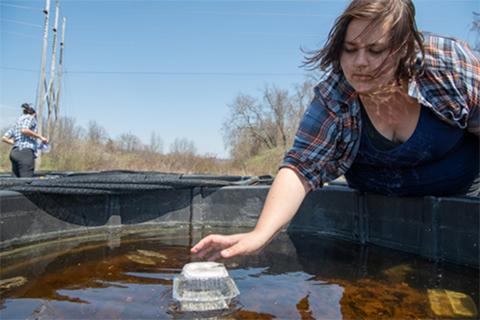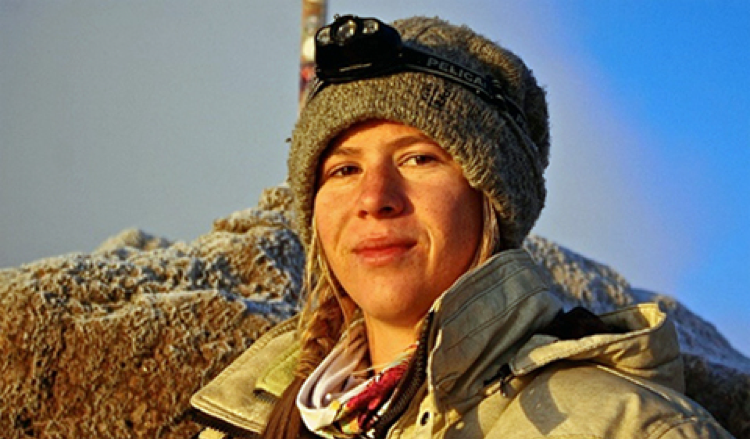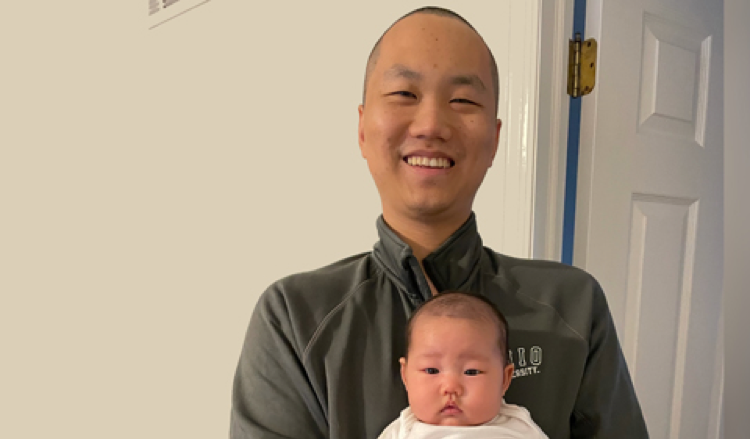Three graduate students walked away winners from the 2021 Ohio University Three Minute Thesis (3MT) Competition finals hosted by the Graduate College on March 24.
"The Three-Minute Thesis competition showcases the phenomenal research our OHIO graduate students are doing," said Becky Bushey-Miller, director of communications and professional development in the Graduate College.
This is the sixth year that OHIO has participated in 3MT, which is now a worldwide phenomenon.
"At some point in their careers, graduate students will need to explain to others what their research includes. This competition helps these graduate students by requiring them to prepare professional presentations succinctly for a non-expert audience. No one knows their research like they do. The challenge is describing its purpose and importance to someone else in a limited amount of time with a single PowerPoint slide," Bushey-Miller said.
Fourteen students competed this year, using their three minutes to present a compelling oration on their thesis or dissertation to a panel of OHIO judges. Cash prizes were given to the top three competitors: $300 for first place, $200 for second place and $100 for third place.
First place went to Cassandra Thompson for her project on "Pesticides: The Good, The Bad, The Frogs."
"I've always had a passion for SciComm, which made this a great exercise to put communication skills to work!" said Thompson, who is working on finishing her dissertation and then hitting the job market in 2022.
"When giving a presentation, it's important to gauge your audience ahead of time so you know how to set the stage and what jargon is appropriate. It's always challenging to articulate your research in a way that anyone, without your background, can understand, but it's such an important skill to have! The end goal for our research is to publish and share results with the community. I don't want my research to be limited to scientists in my field, but to be widely available and accessible, which is where science communication exercises like this come into play. It is especially difficult to fit your research into three minutes, though. It's essentially an elevator pitch!" she said.
"Invasive species are unfortunately pervasive across our landscape. One in particular that has made its way into Ohio is the Hemlock Wooly Adelgid, which has killed millions of Eastern Hemlocks across North America. The most common practice to combat this invasive is through the use of a neonicotinoid pesticide called Imidacloprid, which is often sprayed around the base of infected trees, leading to runoff into nearby bodies of water, where amphibians may be breeding,” she said about her research topic.
Thompson studied the pesticide's effect on a common North American amphibian, the wood frog.
"My 3MT was titled ‘Pesticides: The Good, The Bad, & The Frogs.’ So, the good
is that imidacloprid is effective at controlling the spread of hemlock wooly adelgid, but the bad
is that it can negatively affect amphibian populations at multiple and critical life stages. Luckily, there is something we can do for the frogs. We can better manage the type of pesticide application by using tree injections in place of the more common soil drenching method, which not only has more effective uptake of imidacloprid by the hemlocks, but also has little to no runoff into nearby bodies of water. But it is a more expensive practice to consider in management decisions. The premise of this research is understanding that yes, invasives are bad, but realizing that we have to understand the tradeoffs of using a pesticide like imidacloprid and the effects it can have on vulnerable species, like amphibians, in order to better inform management decisions in the fight against invasives like the hemlock wooly adelgid,” Thompson explained.
Second place went to Marissa Dyck , who spoke about “Assessing population viability of Ohio’s recovering bobcats ( Lynx rufus ).”
Her three-minute thesis focused on her research assessing population viability of Ohio’s recovering bobcats. She incorporated road mortality, habitat suitability and estimates of demographic rates to model a current and a proposed trapping scenario for Ohio’s bobcats. Her results indicated that Ohio’s bobcat population appears to be growing, and neither scenario predicted extinction for Ohio’s bobcats in the next 40 years. Dyck and collaborators are working with the Ohio Division of Wildlife to explore additional scenarios that will inform management decisions.
"The hardest thing about synthesizing my research into a three-minute presentation was deciding what details of the process were crucial to understanding the research. With such a short presentation, you must leave some details out, and that was difficult because the modeling approach we used was very complex, with a lot of work and people contributing and collecting the data for it, and I unfortunately wasn't able to highlight everyone's contributions," says Dyck, adding that her 3MT presentation encompasses one chapter of her dissertation.
Both Thompson and Dyck are studying ecology and evolutionary biology in the College of Arts & Sciences and are mentored by Dr. Viorel Popescu , assistant professor of biological sciences .
Third place went to Xianlong Zeng for his project on "Medical Risk Prediction Using Deep Learning." Zeng is studying computer science in the Russ College of Engineering and Technology. His adviser is Chang Lui , professor of electrical engineering and computer science .
"My 3MT topic is about teaching AI to identify patients with high medical risk automatically—i.e., find patients who are likely to spend a lot of money in the coming future," said Zeng, who is currently preparing his dissertation.
"Hopefully, I can land a job on the West Coast in the near future and fly there with a 'Dr.' on the ticket,” he said.
His family grew by one recently, and Zeng said his new baby was part of his 3MT preparation.
"I wrote down the words in advance and kept rehearsing until I no longer needed to glance at the writing. I repeated it so many times that my baby's first word out of mouth might be 3MT," he added.
The judges for the final round were:
- Dr. Kelly Broughton, assistant dean, University Libraries
- Dr. Christopher Hayes, associate dean, College of Fine Arts
- Dr. Sara Helfrich, associate dean, Patton College of Education
- Dr. Brian McCarthy, associate dean, College of Arts and Sciences
- Dr. Joseph Shields, vice president of research and creative activity and dean of the Graduate College




